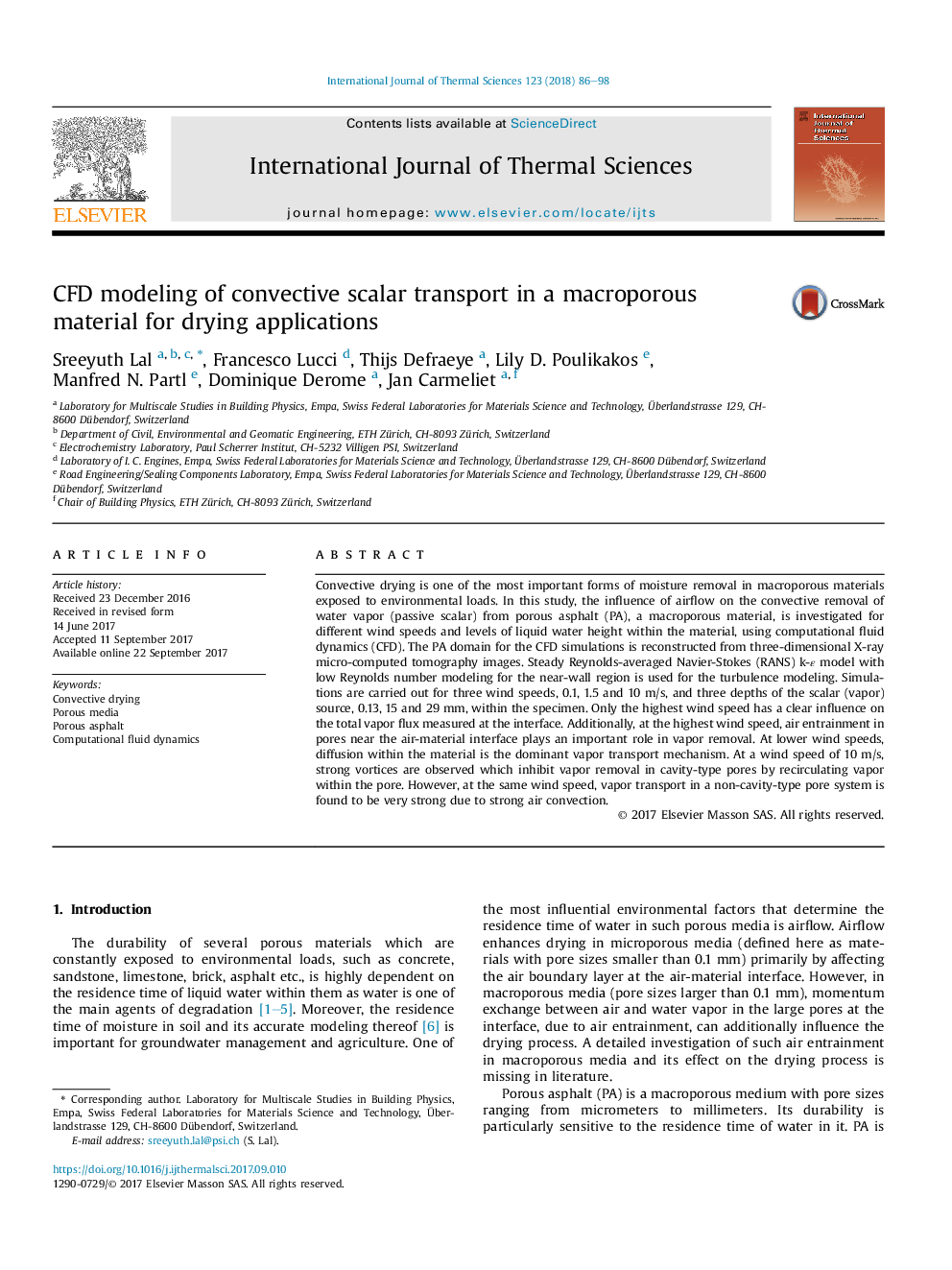| کد مقاله | کد نشریه | سال انتشار | مقاله انگلیسی | نسخه تمام متن |
|---|---|---|---|---|
| 4995132 | 1458699 | 2018 | 13 صفحه PDF | دانلود رایگان |

- Investigate convective scalar transport in macroporous media using CFD.
- CFD domain is reconstructed from X-ray tomographic scans of porous asphalt.
- Significant influence of air entrainment on scalar transport observed at high wind speeds.
- Strong vortices in cavity pores inhibit vapor removal at high wind speeds.
- Non-cavity type pores unaffected by vortices at high wind speeds.
Convective drying is one of the most important forms of moisture removal in macroporous materials exposed to environmental loads. In this study, the influence of airflow on the convective removal of water vapor (passive scalar) from porous asphalt (PA), a macroporous material, is investigated for different wind speeds and levels of liquid water height within the material, using computational fluid dynamics (CFD). The PA domain for the CFD simulations is reconstructed from three-dimensional X-ray micro-computed tomography images. Steady Reynolds-averaged Navier-Stokes (RANS) k-ε model with low Reynolds number modeling for the near-wall region is used for the turbulence modeling. Simulations are carried out for three wind speeds, 0.1, 1.5 and 10 m/s, and three depths of the scalar (vapor) source, 0.13, 15 and 29 mm, within the specimen. Only the highest wind speed has a clear influence on the total vapor flux measured at the interface. Additionally, at the highest wind speed, air entrainment in pores near the air-material interface plays an important role in vapor removal. At lower wind speeds, diffusion within the material is the dominant vapor transport mechanism. At a wind speed of 10 m/s, strong vortices are observed which inhibit vapor removal in cavity-type pores by recirculating vapor within the pore. However, at the same wind speed, vapor transport in a non-cavity-type pore system is found to be very strong due to strong air convection.
Journal: International Journal of Thermal Sciences - Volume 123, January 2018, Pages 86-98